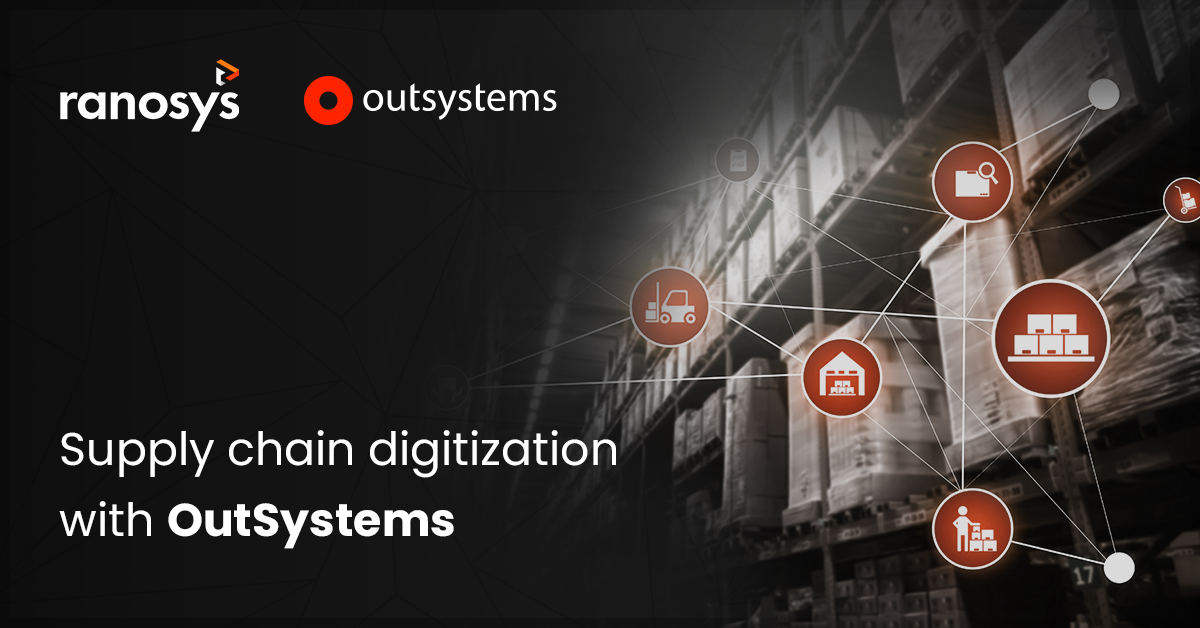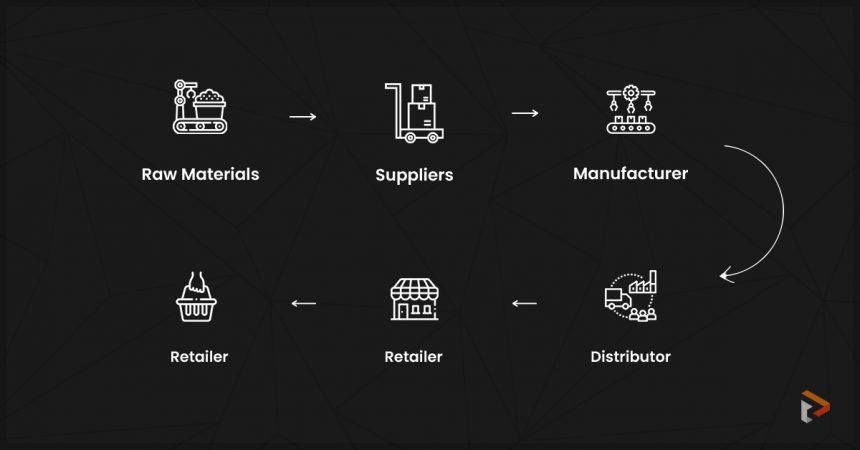Even under the best circumstances, the supply chain and logistics industry face security risks, key material shortages, and rapid demand and supply transformation. 2022 was a year with uncertainties and a highly competitive environment, and as we look ahead to 2023, supply chain disruptions are set to stay.
In 2023:
- Geopolitical tensions will stay, and essential materials can be inaccessible. Major trade routes could be shut down, and organizations will look for friendshoring or nearshoring relationships where supplied goods will be more secure.
- Cybercriminals are likely to damage supply chain networks. They could also hack warehouse equipment like barcode scanners via IoT. Hence strong automation and AI are required to ensure end-to-end transparency and visibility of the supply chain.
- The rising impact of e-commerce sales on product manufacturing, and organizations will demand more products to meet the demands. The prevalence of last-minute delivery challenges relies on suppliers that often experience difficulties. Retailers may need to review their inventory list network and create a seamless experience and operational capabilities.
Therefore, organizations need to implement mature, responsive, and agile supply chain planning capabilities.
What are the most concerning supply chain challenges in 2023?
Instead of relying on a patchwork of legacy systems that struggle to meet customer demands, the supply chain and logistics vertical need to leverage and implement evolving technologies. The current supply chain complexity leads to inefficiency, high operational costs, and delayed shipments. Significant challenges a business faces in supply chain management are:
#1. Heavy reliance on legacy applications
Anything that evades tightly scripted time causes vendor issues, shipping delays, and doesn’t take into consideration labor shifts which can lead to huge supply chain disruptions. In 2023, the supply chain companies can face massive challenges in port congestion, shortage of containers, labor, and transport equipment leading to operational difficulties and truck or driver shortages. With the shift from physical in-store shopping to eCommerce, organizations need to use tracking software and modern applications instead of manual processes to overcome these challenges.
#2. Unforeseen Costs
The lack of availability of any one material due to uncertainty like inflation or natural calamities breaks suppliers’ commitments leading to unpredictable costs and expensive product deliveries. Hence it is a must to enable transparent inventories. This challenge calls for automation, machine learning, and predictive analytics to provide a unified view of chain demands and deliver tailored experiences. Also, a focused approach for end-to-end integrated (E2E) solutions to avoid supply chain disruptions.
#3. Increasing order volumes
With the ever-increasing customer demands, businesses cannot maintain already escalating inventory costs and overburdening transactions. As order volumes increase, supply chain enterprises require an automated system that logs in their inventories for every order placed and prevents operational inefficiency or mismanaged supply chain. To handle these, E2E supply chains must leverage software solutions that help them handle ever-increasing order volumes while fulfilling customer expectations.
How OutSystems helps overcome these supply chain challenges: The use cases
With irregularity and disruptions likely to continue, organizations need to practice supply chain digitization at the earliest. And OutSystems low-code platform helps accomplish this digital transformation goal of supply chain by reducing development time, evolving systems and building agile supply chain systems and applications. Some of the use-cases of OutSystems that helps in solving supply chain challenges include:
#1. Supply Chain Optimization: With low-code solutions like OutSystems, you can create legacy-free software that boost supply chain operational efficiency. Through OutSystems high-performance low-code platform you can accelerate integrations with data model consideration, APIs, and pre-built integrations to ensure faster steps and automation. This way, you can partially or fully automate most supply chain tasks like invoicing, inventory management, and warehousing.
#2. Supply chain tracking: Real-time tracking is essential for making the process transparent in the supply chain and provide users with timely updates. With OutSystems, enhanced integration capabilities of low-code allow businesses to improve connections across various systems for easy tracking. It allows maximum supply chain flexibility, IT governance, and integrated cyber security.
#3. Centralized information: For business managers, manual tracking of information amongst warehouses becomes a tedious task and slows down operations. Therefore, developing an OutSystems software that brings together multiple data sources across warehouses and integrates them to a unified tracking system with ERPs is crucial. With OutSystems, supply chain enterprises centralize all their information across warehouses to enable a holistic view of details including notifications about the expiry of products, inventory and product availability, and all the related particulars for teams across cities.
#4. Improved communication between cross teams: Low-code platforms like OutSystems help improve communication between raw material suppliers, warehouse managers, importers, logistics, and distributors located across geographies and cities. It offers a wide variety of user experience elements, such as forms and dialog boxes to provide smooth collaboration between the involved parties. This facilitates better decision-making by creating legacy-free solutions that improves communication between cross-functional teams and employees.
Why enterprises must employ OutSystems for supply chain management
While the supply chain challenges that logistics companies face today can be overwhelming, there are technology-driven solutions to help overcome these challenges through OutSystems. The low-code platform manages supply chains that are agile and predictable. Some of the benefits of choosing OutSystems as a platform for your supply chain enterprise are:
#1: OutSystems improves operational process efficiency
Since organizations have complex and dynamic supply chains that include provisioning, raw material supply, warehousing, and distribution of products to consumers, OutSystems help bring together all these processes under one roof, improve operational visibility and overall efficiency.
Organizations want to increase the resilience of supply chains and meet unique needs effectively. With OutSystems, you can cut down the development time, enabling companies to adapt to market conditions, disruptive events, or evolving marketing strategies.
#2: Unlock the power of digitization for your enterprise systems
Supply chain management demands faster digitization, and with OutSystems, you can make changes easily, avoiding lengthy processes of logistics software. You can adjust the workflow as per your enterprise needs, reducing their dependencies on other departments. Implementing automation and artificial intelligence to your company’s workflows modernizes your legacy systems, allowing for improved supply chain management.
#3: Eliminate data silos between teams
OutSystems-led supply chain applications and tools eliminate data silos between systems and warehouses to unlock better collaboration. This allows you to focus on important tasks and new business opportunities rather than accomplishing traditional routine management.
#4: Real-time tracking for employees, partners, suppliers and users
OutSystems ensures real-time sharing of information like orders, payments, shipping, and delays to provide a 360-degree view of details across systems and teams, improving collaboration between people, processes and vendors.
Simplify supply-chain management with OutSystems and Ranosys
Every supply chain and logistics company needs to enforce stringent supply chain management protocols to improve inventory management, automate order fulfillment, and step towards a legacy-free future. Through OutSystems high performance low-code, organizations can build adaptable applications fast to improve process efficiency and enable seamless collaboration. As an OutSystems Partner, we help supply chain enterprises in modernizing their legacy applications for better logistics, boost your ability to manage processes systematically, and increase overall ROI.





